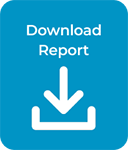Shadow Board recommends the Reserve Bank cut the OCR by 25 basis points in May
The NZIER Monetary Policy Shadow Board recommends that the Reserve Bank of New Zealand (RBNZ) should cut the OCR in the upcoming May Monetary Policy Statement, with almost half of the Shadow Board members recommending a 25 basis-point OCR cut. One member recommended a 50 basis-point cut, believing that the New Zealand economy needs more stimulus. In contrast, several members recommended that the RBNZ keep the OCR unchanged in May. The recent increase in inflation and inflation expectations and heightened global uncertainties were highlighted as factors which warranted the need for caution by the RBNZ.
Regarding where the OCR should be in year’s time, most members picked an OCR ranging between 2.50 percent and 3.50 percent. This reflects a much lesser extent of OCR cuts over the coming year than the large cuts seen since August 2024. Several members highlighted that recent developments in inflation point to upside risks to the medium-term inflation outlook, while the weaker global conditions present potential downside risks to the New Zealand economy. They viewed it most appropriate for the RBNZ to take a wait-and-see approach when assessing future OCR moves, as it needs to assess how the risks play out on net. One member considered further OCR cuts are warranted, given the current fragile nature of the recovery of the New Zealand economy.


Table 1 Participant comments
Participants' comments are optional
| Stephen Toplis | Uncertainty about the “right” level for interest rates is extremely elevated. The spread of possible outcomes is wide. Yet, despite this, we still feel that downside risks to growth and medium-term inflation should dominate the RBNZ’s thinking. |
| Viv Hall | It is not yet clear that downside risks for global and domestic growth outweigh upside risks for inflation. Inflation remains in the top half of the 1–3% range, domestic cost and inflation pressures remain persistent, and inflation expectations are still stubbornly above 2%. On balance, therefore, the OCR should remain at 3.5% for this round. Currently available data doesn’t enable calling the direction of future OCR movements with any degree of certainty. |
| John Pask | Spare capacity in the economy allows room for a further easing in the OCR without the risk of reigniting inflation. However, continued geopolitical uncertainty presents both potential upside and downside risks to inflation over the medium term, which the Reserve Bank will need to keep a close eye on. |
| Jarrod Kerr | The RBNZ’s decision is a big one. It is pivotal. A rate cut is all but guaranteed. But it’s the outlook that will drive markets. We need to see a lowering in the OCR track. And a 50bp move next week is justified. Most economists believe the cash rate should be cut to at least 3%, with a clear bias for lower rates. We’re advocating a move to 2.5%. So why muck around? Why keep the cash rate above a neutral setting? If neutral is 3%, current policy settings remain restrictive. Yes, the RBNZ has a restrictive policy setting following a deep recession, easing inflation, and a developing trade war. We are crawling out of this recession and need a leg up. |
| Arthur Grimes | The world economy is very volatile and could change again overnight. In such circumstances, it pays the RBNZ to be cautious with respect to changing the OCR, as a quick backtrack would add further to uncertainty. In this situation, while a tiny easing may be warranted now, on balance, it makes sense for the RBNZ to delay any change decision until the next review. |
| Kelly Eckhold | It remains time to slow the pace of cuts. The inflation outlook does not justify significantly easier policy unless the impacts of weaker global growth have a tangible local impact. The current 25 bp cut seems appropriate but we should wait until August to assess again. |
| Dennis Wesselbaum | Many trade-offs to make: 2.6% inflation (tradables up, non-tradables still at 4%), inflation expectations trending up, GDP growth is low, and unemployment/jobseeker support is up. There is a large uncertainty and ambiguity around trade, and I haven’t seen the Budget yet. On balance, and given the RBNZ’s mandate, it is probably time to wait for further cuts. |
| Brooke Roberts | No comment. |
About the NZIER Monetary Policy Shadow Board
NZIER’s Monetary Policy Shadow Board is independent of the Reserve Bank of New Zealand. Individuals’ views are their own, not those of their respective organisations. The next Shadow Board release will be Monday, 7 July 2025, ahead of the RBNZ’s Monetary Policy Review. Past releases are available from the NZIER website: www.nzier.org.nz.
Shadow Board participants put a percentage preference on each policy action. Combined, the average of these preferences forms a Shadow Board view ahead of each monetary policy decision.
The NZIER Monetary Policy Shadow Board aims to:
• encourage informed debate on each interest rate decision
• help inform how a Board structure might operate
• explore how Board members could use probabilities to express uncertainty.
For further information, please contact:
Ting Huang, Senior Economist
ting.huang@nzier.org.nz, 027 266 0969
Share this
Related publications

Shadow Board overwhelmingly in favour of keeping the OCR on hold in April

Shadow Board recommends the OCR should remain at 5.5 percent in August

